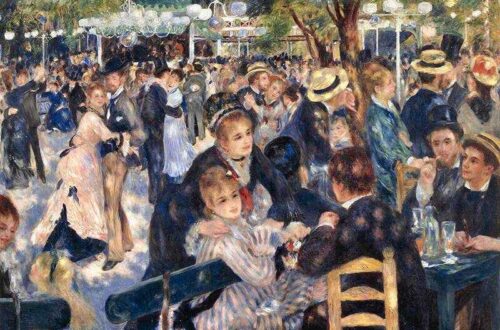Going beyond the limits of a medium was the be-all-end-all American painter Jackson Pollock (1912-1956). Pollock was the founder of action painting, a pioneer of abstract expressionism, and an enthusiastic patron of the unconventional.
In the 1950s, his work helped New York to become a capital of the international art world. With this, Pollock left a lasting mark on the history of art.
Here are 10 things worth knowing about the elusive painter whose work continues to influence contemporary artists.
1.
Paul Jackson Pollock — Pollock only began using his middle name Jackson in 1930. Time magazine coined the nickname “Jack the Dripper” during his lifetime, in reference to his dripping technique.
2.
Alongside painting, Pollock also created a handful of sculptures.
3.
The gallery owner Peggy Guggenheim took Pollock under an exclusive contract in 1943 and opened doors to the New York art scene to him.

4.
Thanks to the publications of Clement Greenberg, art critic and one of the most influential people in the US art scene of the time, Pollock’s fame grew steadily. Greenberg was an advocate for the purity of form and abstraction. He believed that art should be defined by its medium, canvas, color, and surface. Greenberg was an ardent defender of abstract expressionism and of Jackson Pollock in particular.
5.
Pollock’s expressionist works combine two influences: one inclination towards formalism and one towards surrealism.

6.
Pollock’s psychotherapists are said to have used his painting techniques.
Pollock chose to work on a canvas on the floor due to there being no easels of that size. From there, his entire body became an extension of the brush. For his method of letting the paint flow, splash and drip, Pollock had to move frantically to create a symbiosis of colors and texture.
This physically demanding process is subject to the rules of physical effects, such as gravity or the flow of different colors, which a viewer can witness in action painting.
According to anecdotal evidence, Pollock was undergoing treatment in the early 1940s to manage his alcoholism, which included sessions with psychoanalysts Joseph L. Henderson and Dr. Violet Staub de Laszio. Both used Pollock’s painting technique “All-Over”, as a therapeutic medium.
7.
Pollock’s sources of inspiration included North American indigenous art and shamanic cultures.
Pollock was fascinated by motifs from the indigenous art of North America and was also preoccupied with the theories of C. G. Jung. He shared Jung’s view that the unconscious is the source of art. Following this, Pollock believed in spiritual transformation through the creation of art. His works up to the early 1940s repeatedly depict Native American and Inuit motifs.

8.
Pollock’s favourite painter was Albert Pinkham Ryder.
9.
Hans Namuth and his films shaped the Pollock myth.
In the summer of 1950, Jackson Pollock had himself filmed and photographed at work by the photographer Hans Namuth (1915-1990). Namuth was a photographer who had immigrated to the US from Germany. Pollock specially painted a glass plate through which Hans Namuth could record him. The photo series appeared in the art magazine Portfolio in spring 1951. These photographs exposed Pollock to a wider public.
10.

No beginning and no end – a key element of his process:
“There was a reviewer a while back who wrote that my pictures didn’t have any beginning or any end. He didn’t mean it as a compliment, but it was.”
Jackson Pollock
Finally, in 1956 Pollock tragically died in a serious car crash while under the influence of alcohol.













